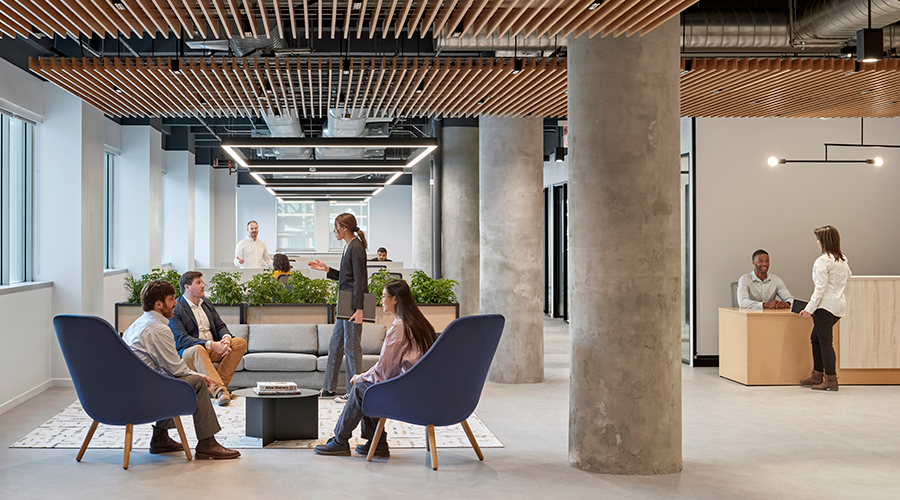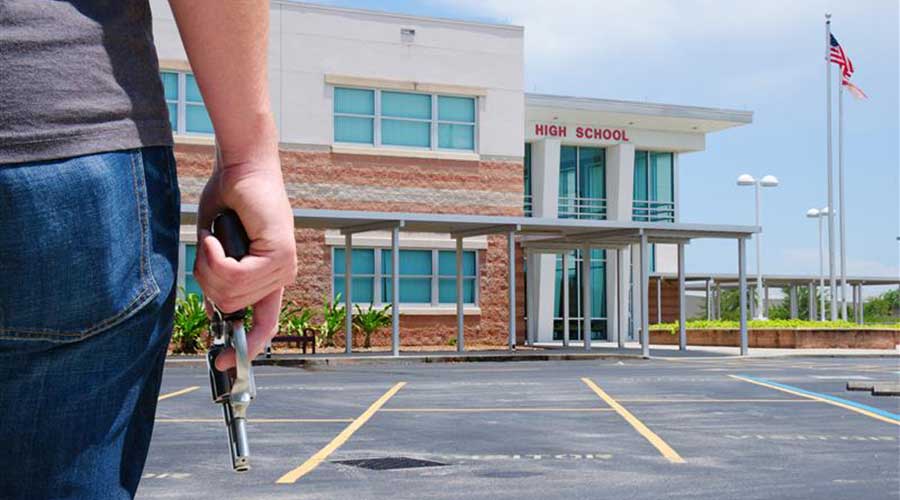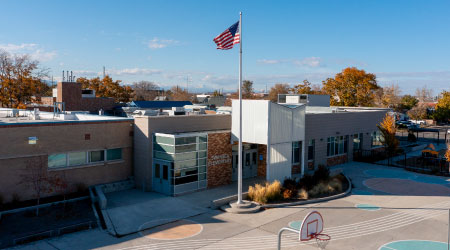LEED Lessons for Campus
Deciding on the most applicable green building strategies and determining the right approach for a project isn’t always easy. The following are some tips to remember, gleaned from actual LEED projects for the higher education market.
Pennsylvania State University’s Forestry Building is LEED-certified at the Silver level. One of the basic LEED construction issues is waste recycling. On projects where there is adequate space, the contractor can recycle on site in multiple dumpsters. However, if space is tight, many waste companies now allow waste to be commingled and transported to a separate site to be sorted. Recycling off site will reduce the number of trucks entering and leaving the project site.
Another tip that emerged from this project was the room numbering used to label the mechanical, electrical and plumbing equipment, which is programmed into the BAS. If the correct numbering system is not given to the design team in time for it to be incorporated onto the contract drawings, it will cause labeling problems. The ductwork should be marked in the mechanical room as the contractor is installing the mechanical ductwork (for construction, the labeling needs to match the drawings). If the final room numbering is on the drawings, labeling on the ductwork will also be correct, making it easier to start up the BAS system and commission the building.
The Right Timing
At De Anza Foothills Community College’s Kirsch Building, a LEED Platinum project, a big issue was when to employ the commissioning agent. It is important to bring on the commissioning agent during the design phase because it is required to get the commissioning LEED credit. Also, if the commissioning agent is involved during design, the operations group can have more input into the functional testing that impacts the overall performance of the MEP systems. For energy savings, this can be the most critical element in the LEED process.
Commissioning should also include the training of the operations staff. Video taping that training has many benefits, from having the training available for use when staff changes to simply being able to review what was discussed.
Giving each of the subcontractors at Arizona State University’s Interdisciplinary Science and Technology Building, a LEED Silver project, an overview of the building and its LEED components proved to be beneficial. The open communication gave the workers on the site an understanding of the importance of following the indoor air quality requirements. Issues like not smoking in the building (even before it is enclosed), protecting materials on site from moisture, and protecting the ductwork have an impact on the final quality of the project and its ability to meet LEED criteria. It’s also helpful to include the maintenance staff early in the construction process. Giving them an overview helps them appreciate the building and aids in their review and inspection opportunities as the building is constructed.
One of the LEED credits in the Indoor Air Quality section includes flushing the building after construction is complete. This process takes time and needs to be incorporated into the overall construction schedule. When construction nears completion and there are competing forces to finish the building and move in — usually right around the beginning of a school semester — it is easy to justifying skipping the flush. But it is a worthwhile process that will help remove all those “new building” smells and contaminants that often cause early occupant complaints and allergic reactions. The LEED rating system has modified its process to allow for the building to be flushed in sections.
One of the lessons learned from Ithaca College’s School of Business, a LEED Platinum project, was to involve senior facility department heads in early programming and value engineering sessions. It’s also a good idea to conduct comment sessions with university staff to get their input. This particular project included a south-facing glass curtain wall. While beneficial for daylighting, the wall reflected the sun on adjacent buildings and resulted in the need for shades and blinds for the other buildings.
The real estate industry as a whole is moving toward sustainability in virtually all construction and upgrade projects, and higher education is no exception. Campuses that want to see the biggest return on their investment will adopt a high-performance model — one that guides project teams to think beyond the credits of LEED, sparking discussion in areas such as maintainability of systems, real energy savings and operational program requirements.
In addition to thinking about high performance, colleges also need to determine the type of building program that is right for their specific goals. This can be accomplished by not only committing to having a LEED building, but by taking the time to see what is required to get there and having all of the right pieces in place from the beginning. 
Staying on Course
Some of the most important factors to a successful sustainability project occur in the planning stages and are often overlooked. When beginning the process, it’s key to keep in mind the following:
- Are your maintenance goals aligned with the project’s goals and budget?
- Does the project have a green or LEED consultant on board? It helps to have someone who can draw from their experience on similar projects.
- If you are going for LEED certification, do the materials in your campus master plan meet the regional requirements?
- Does your building control system have adequate points to monitor the building systems and utilities?
Once the project is underway, there are some steps to get the most out of a budget and the sustainable building experience on campus:
- Engage the campus community in sustainability efforts.
- Ensure that commissioning is part of the construction process and included in both the design and construction contracts. Commissioning done properly will ensure that the building operates as designed when it opens.
- Have the contractor give the operations staff complete training on the BAS systems. Then track systems operations and energy usage. Once the building is occupied, reevaluate the systems scheduling to make sure the savings are being delivered.
|
Carol A. Moore, AIA, LEED AP, is a project executive with Gilbane Building Company. A registered architect with more than 34 years of design and construction experience, Moore has been active in sustainability issues since the 1970s.
Related Topics:














